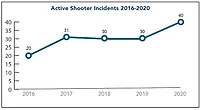Global News
US active shooter incidents rose 52% in 2021
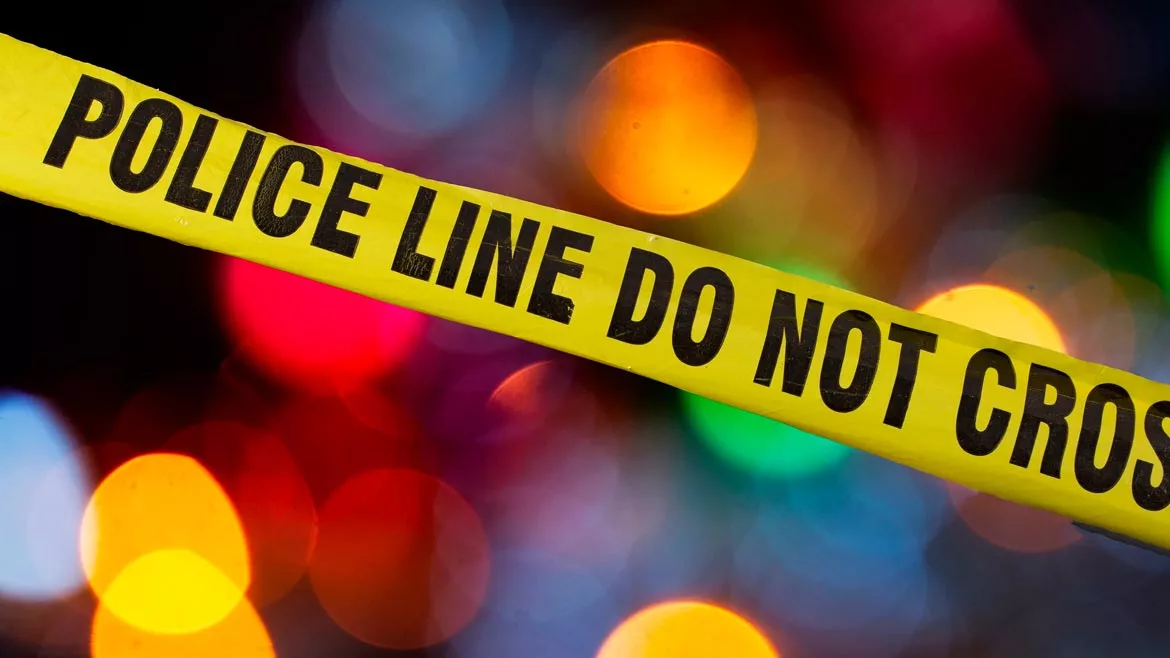
brazzo / iStock / Getty Images Plus / via Getty Images
The Federal Bureau of Investigation (FBI) designated 61 shootings in 2021 as active shooter incidents. The FBI defines an active shooter as one or more individuals actively engaged in killing or attempting to kill people in a populated area. Implicit in this definition is the shooter’s use of a firearm. The active aspect of the definition implies the ongoing nature of an incident and thus the potential for the response to affect the outcome.
When evaluating shooting incidents to determine if they meet the FBI’s active shooter definitions, researchers considered for inclusion:
- Shootings in public places
- Shootings occurring at more than one location
- Shootings where the shooter’s actions were not the result of another criminal act
- Shootings resulting in a mass killing (defined as three or more killings in a single incident)
- Shootings indicating apparent spontaneity by the shooter
- Shootings where the shooter appeared to methodically search for potential victims
- Shootings that appeared focused on injury to people, not buildings or objects
The report does not encompass all gun-related shootings, and gun-related incidents were excluded if research established it was the result of self-defense, gang violence, drug violence, contained residential or domestic disputes, controlled barricade/hostage situations, crossfire, or an action that appeared not to have put other people in danger.
While the report does not explore all facets of active shooter incidents, law enforcement officers, first responders, corporation, educators and the public can use the report as a baseline for understanding active shooter incidents.
Incident Statistics
For the period 2017-2021, active shooter incident data reveals an upward and concerning trend: the number of active shooter incidents identified in 2021 represents a 52.2% increase from 2020 and a 96.8% increase from 2017. 2021 witnessed the highest number of active shooter incidents for the years 2000-2021.
A breakdown of the number of incidents within the five-year period of 2017-2021 is as follows: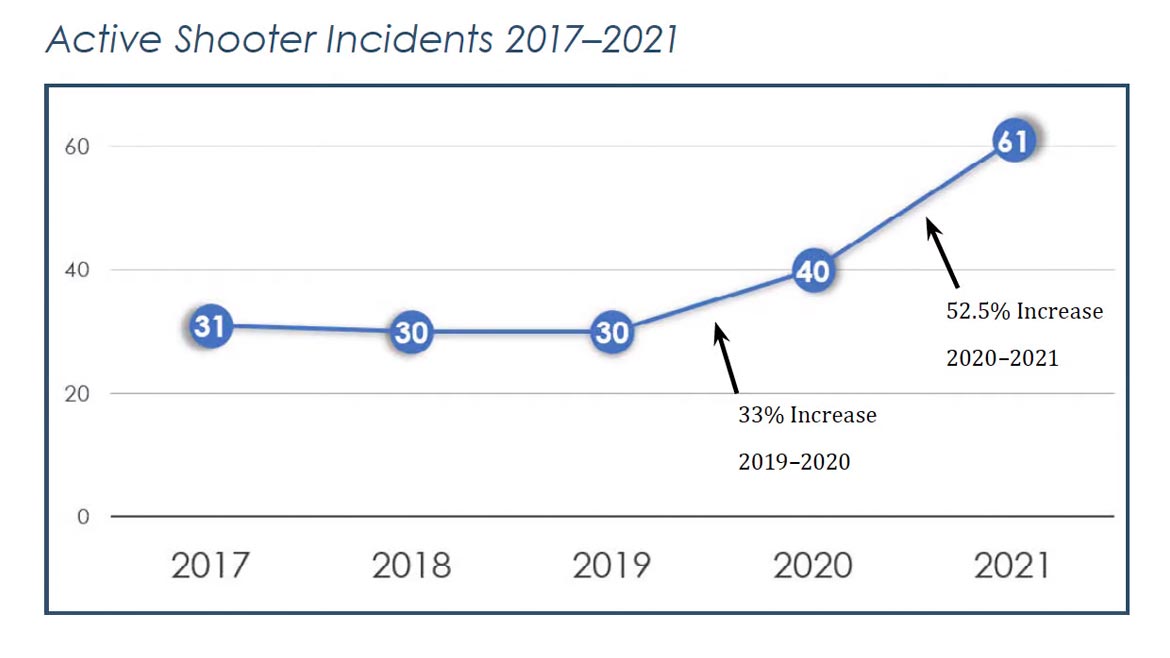
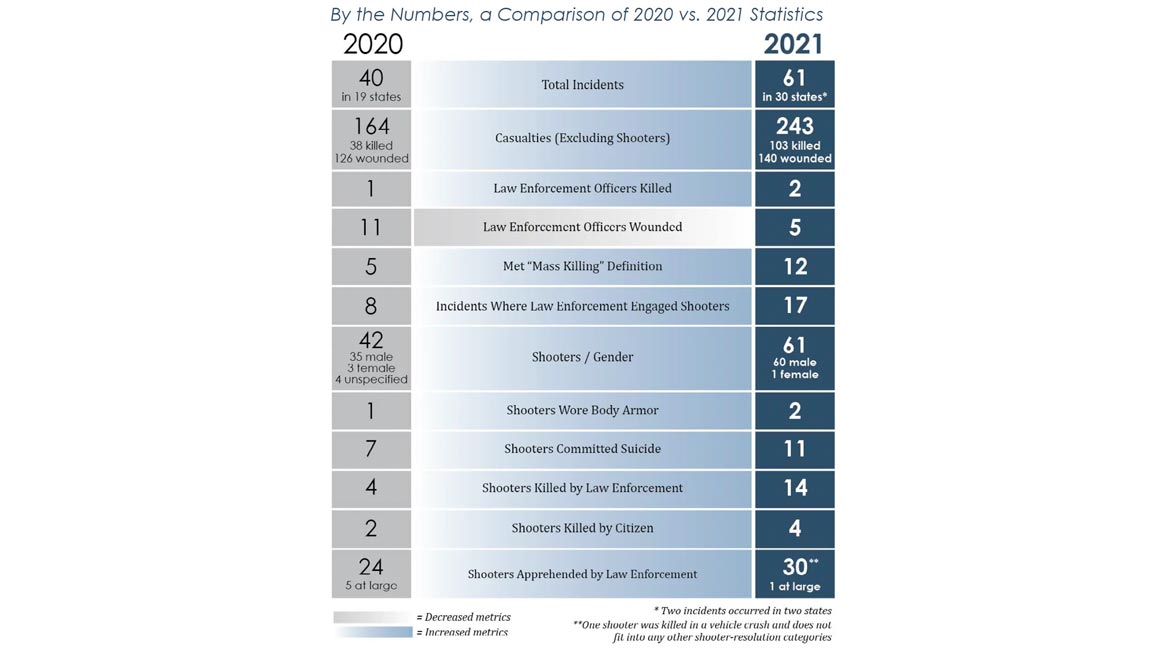
Image courtesy of the FBI
December had the fewest number of incidents (one); similar to 2020, June had the highest number of incidents (12). Compared to 2020, April saw the biggest increase in incidents (from zero to 10).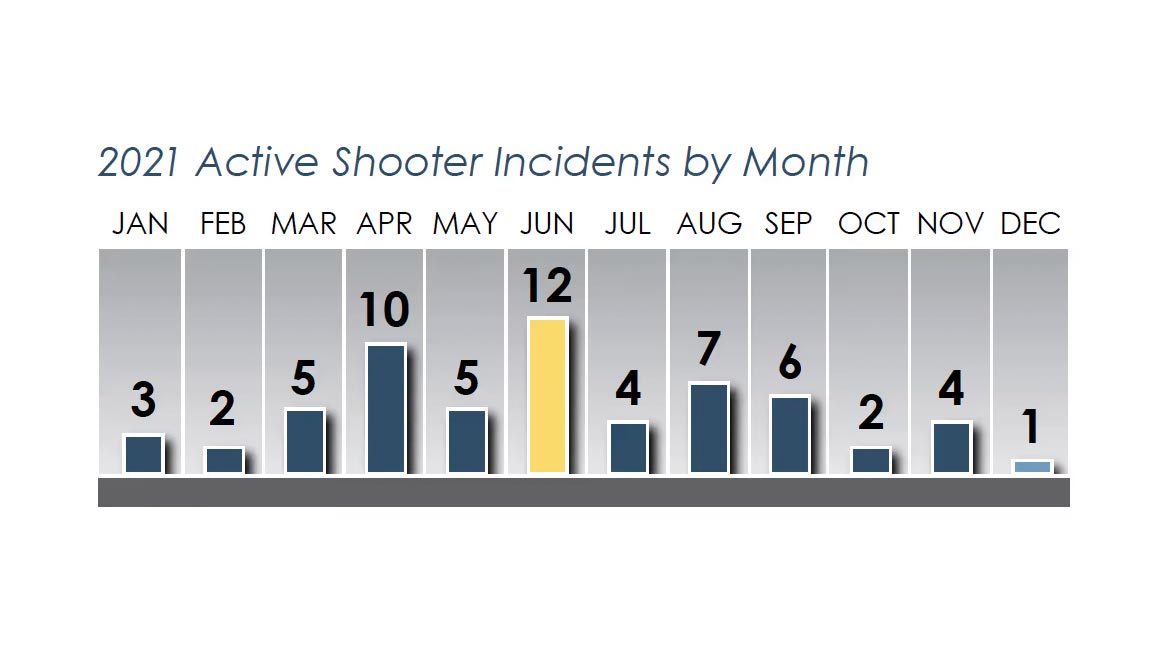
Image courtesy of the FBI
Unlike 2020, active shooter incidents occurred every day of the week. Like 2020, Saturdays saw the most incidents (14).
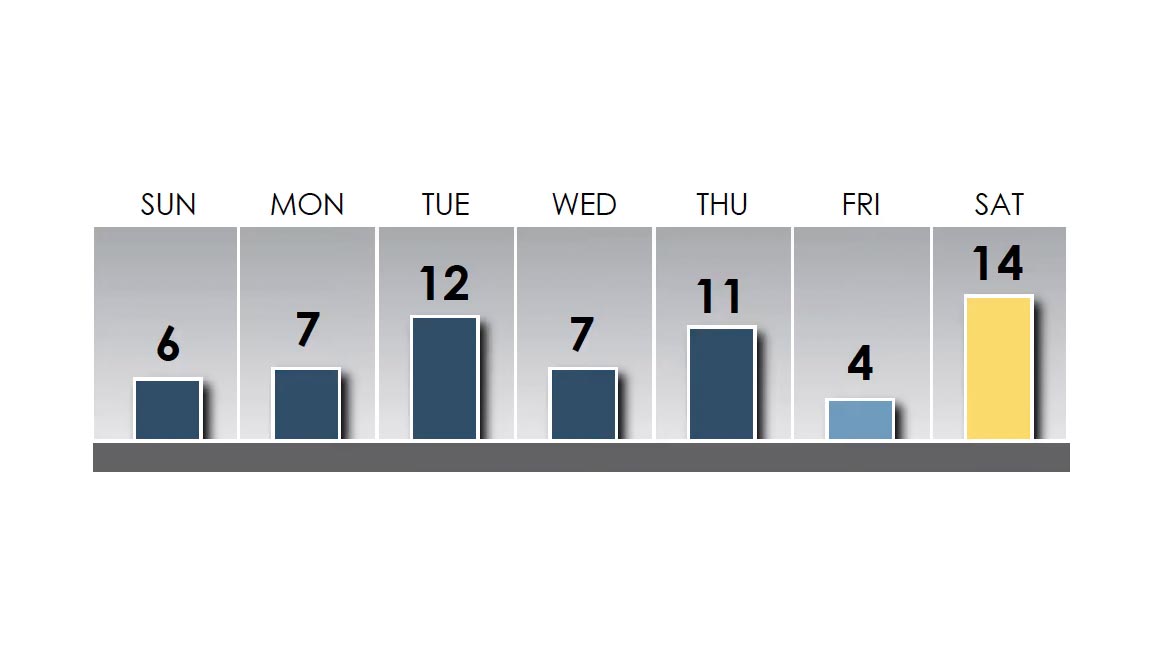
Image courtesy of the FBI
34 incidents (55.7%) occurred between 12:00 p.m. and 11:59 p.m., and 44.3% (27 incidents) occurred between 12:00 a.m. and 11:59 a.m. Data shows that an active shooter incident is more likely to occur (63.9%) between 6:00 a.m. and 5:59 p.m. (39 incidents occurred during this timeframe).
A breakdown of number of incidents by time is as follows:
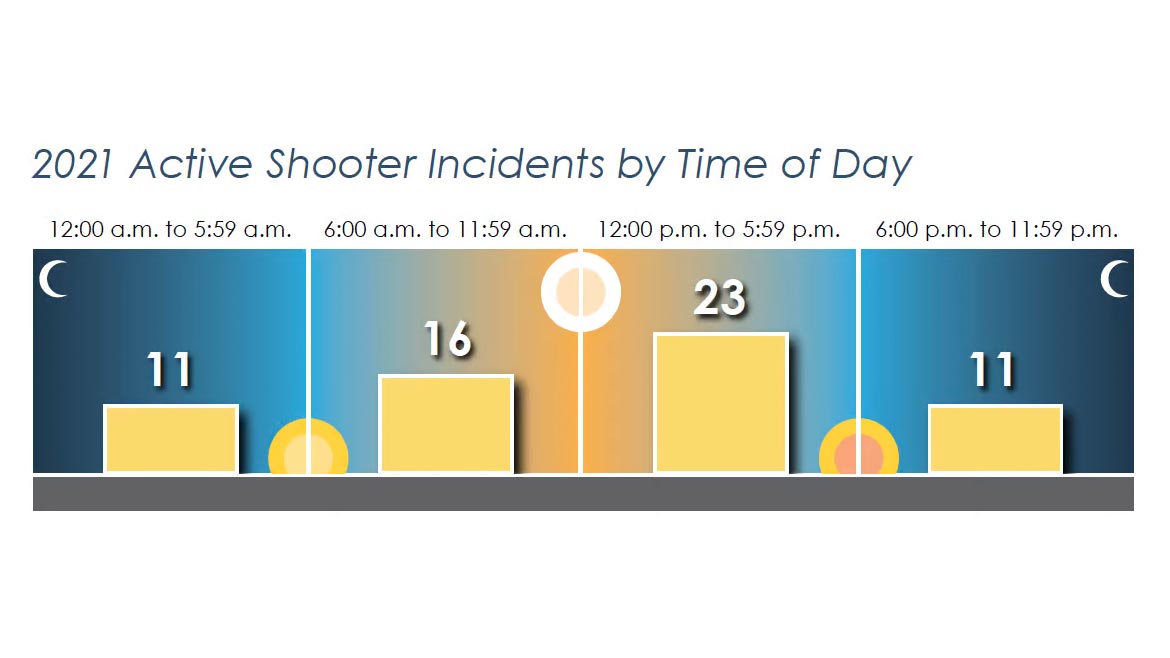 Image courtesy of the FBI
Image courtesy of the FBI
The 61 active shooter incidents in 2021 occurred in 30 states.
- Six incidents occurred in California.
- Five incidents each occurred in Georgia and Texas.
- Four incidents each occurred in Colorado and Florida.
- Three incidents occurred in Indiana, Michigan, North Carolina, and Tennessee.
- Two incidents occurred in Alabama, Arizona, Illinois, Maryland, Nevada, and South Carolina.
- One incident occurred in Arkansas, Connecticut, Idaho, Kansas, Kentucky, Louisiana, Massachusetts, Minnesota, Mississippi, Missouri, Nebraska, New York, Ohio, Pennsylvania, and Wisconsin.
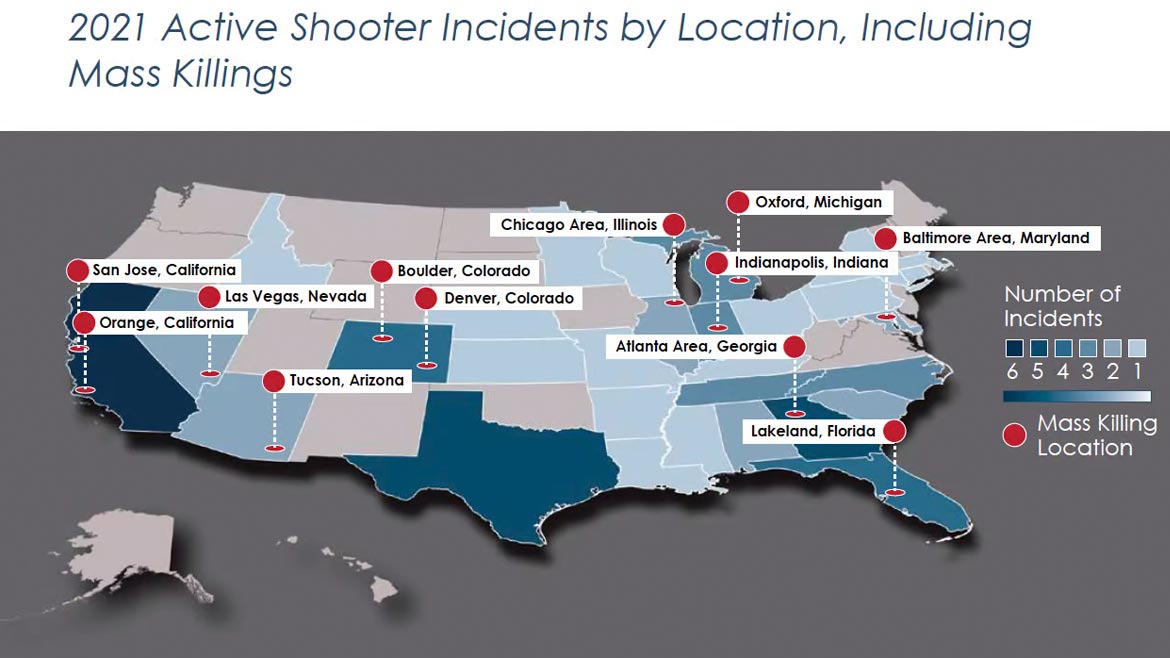 Image courtesy of the FBI
Image courtesy of the FBI
Twelve of the 61 incidents met the criteria cited in the federal definition of mass killings — three or more killings in a single incident.
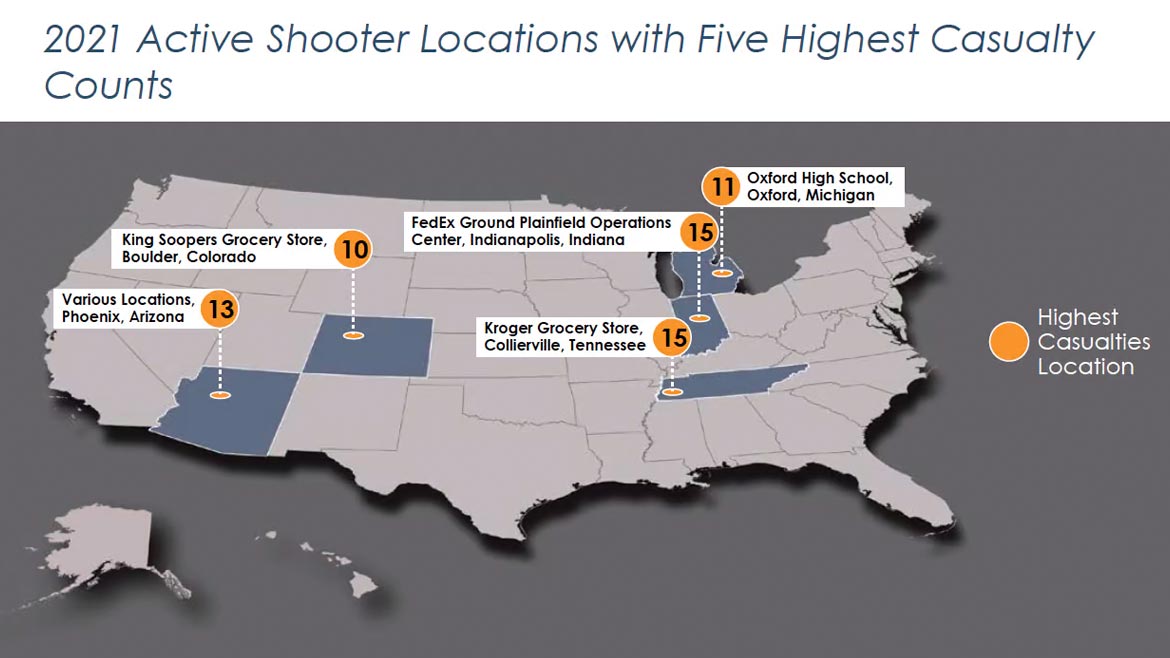
Image courtesy of the FBI
Casualties
The 61 active shooter incidents reviewed in this report resulted in 243 total casualties — the number of people killed or wounded — to be exact, 103 were killed and 140 were wounded, excluding the shooters. In this report, persons described as “wounded” were not injured by gunfire but rather suffered injuries incidental to the shooting, such as being hit by flying objects or shattered glass, or falling while running. These were included in the casualty count when research may not have allowed for the type of injury to be discerned.
A breakdown of the incidents/locations with the five highest total casualty counts is as follows:
- FedEx Ground Plainfield Operations Center, Indianapolis, Indiana: eight killed, seven wounded (15)
- Kroger Grocery Store, Collierville, Tennessee: one killed, 14 wounded (15)
- Various locations in Phoenix, Arizona: one killed, 12 wounded (13)
- Oxford High School, Oxford, Michigan: four killed, seven wounded (11)
- King Soopers Grocery Store, Boulder, Colorado: 10 killed (10)
The total casualty count for 2021 (243) is below the average for the period 2017–2020 (345.25), but exceeded casualties in 2020 (164) by 48%. The 2021 numbers represent the third-highest total casualty count over the last five years (2017–2021).
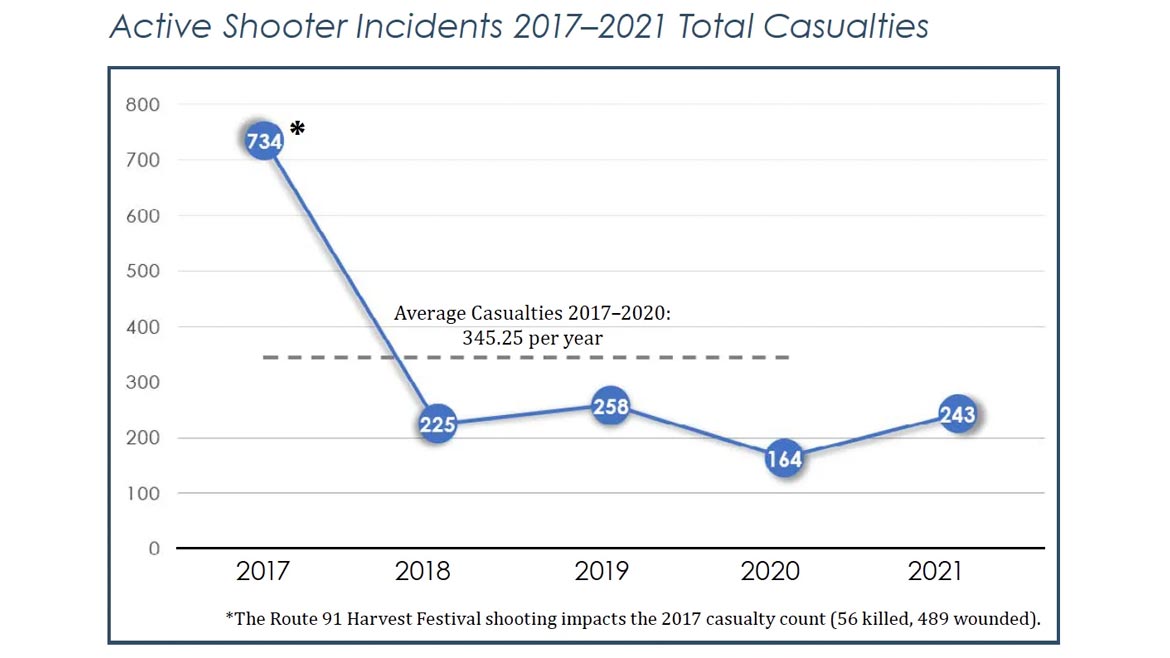 Image courtesy of the FBI
Image courtesy of the FBI
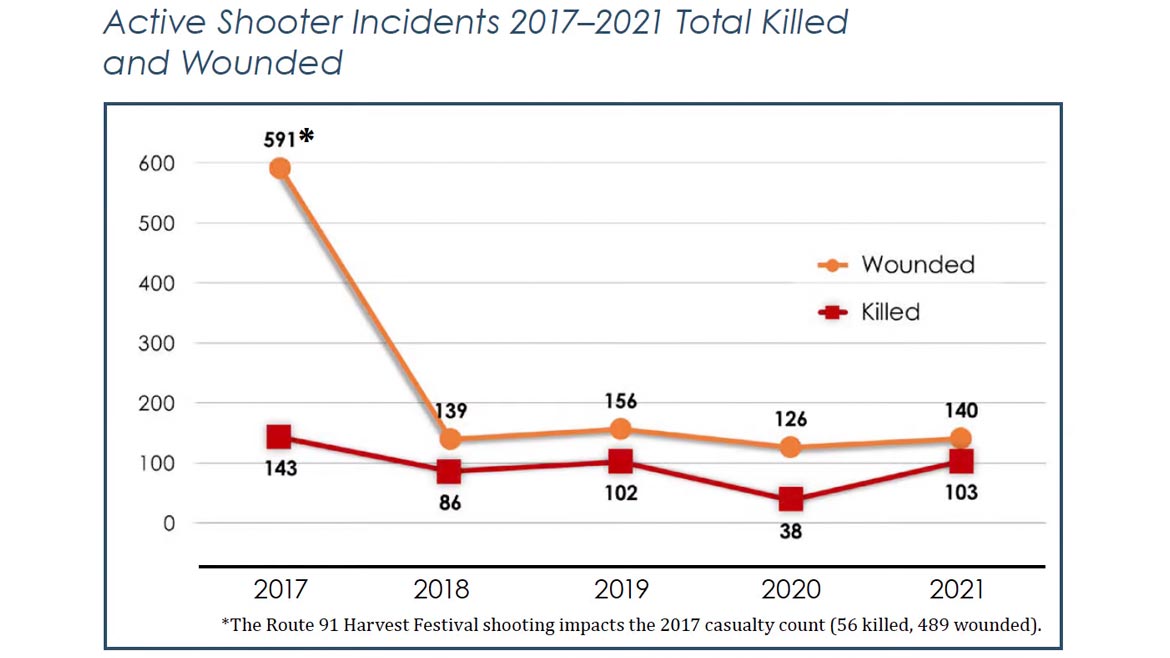 Image courtesy of the FBI
Image courtesy of the FBI
When strictly talking about deaths, the highest number of deaths from an active shooter incident in 2021 occurred at the King Soopers Grocery Store, Boulder, Colorado, where 10 people were killed. The second highest number of deaths occurred at Santa Clara Valley Transportation Authority Rail Yard, San Jose, California, where nine people were killed.
2021 saw the highest number of deaths since 2017, and a 171.1% increase from 2020. 2021 deaths were above the average (92.3) for the period 2017–2020.
Law Enforcement/Security Personnel/Citizen Engagement and Casualties
In 17 incidents, law enforcement engaged the shooter. In four of those incidents, law enforcement sustained injuries. In one incident, security personnel engaged the shooter and sustained injuries. 2021 witnessed an increase in incidents where citizen involvement impacted the engagement. In four incidents, citizens confronted the shooter, thereby resulting in the incident ending.
Locations
Commerce: 32
Thirty-two of the 61 active shooter incidents occurred in areas of commerce, resulting in 68 killed and 72 wounded. Twenty-eight incidents occurred in business environments open to pedestrian traffic, resulting in 57 killed, including three managers, 17 employees, two law enforcement officers, and one security officer. Fifty-four were wounded, including 17 employees, and one law enforcement officer.
Education: 2
Two of the 61 incidents occurred at education locations, resulting in four killed (students) and ten wounded (eight students, two employees).
Government: 3
Three of the 61 incidents occurred on government property locations, resulting in nine killed (employees) and two wounded.
Open Space: 19
Nineteen of the 61 incidents occurred in open space locations, resulting in 15 killed, including one emergency medical technician. Fifty-one people were wounded. The wounded included three law enforcement officers, one security officer, and two emergency personnel.
Residence: 3
Three of the 61 incidents occurred at residential locations, resulting in six victims killed and one wounded.
Houses of Worship: 1
One of the 61 incidents occurred at a house of worship location, with no casualties reported.
Healthcare: 1
One of the 61 incidents occurred at a healthcare location, resulting in one killed and four wounded.
The Shooters
Sixty-one shooters carried out 61 active shooter incidents. Sixty shooters were male, and one was
female. Sixty shooters acted alone. The youngest shooter was 12 years old; the oldest was 67 years old.
Other details about the shooters include:
- Two shooters wore body armor.
- One shooter had four improvised explosive devices (IEDs).
- Thirty of the shooters were apprehended by law enforcement.
- Fourteen shooters were killed by law enforcement.
- Four shooters were killed by armed citizens.
- One shooter was killed at another location in a vehicle crash.
- Eleven shooters committed suicide.
- One shooter remains at large.
- Six shooters were employees, four shooters were former employees, two shooters were current students, two shooters had past personal or professional relationships with the victims, and one shooter was a business owner.
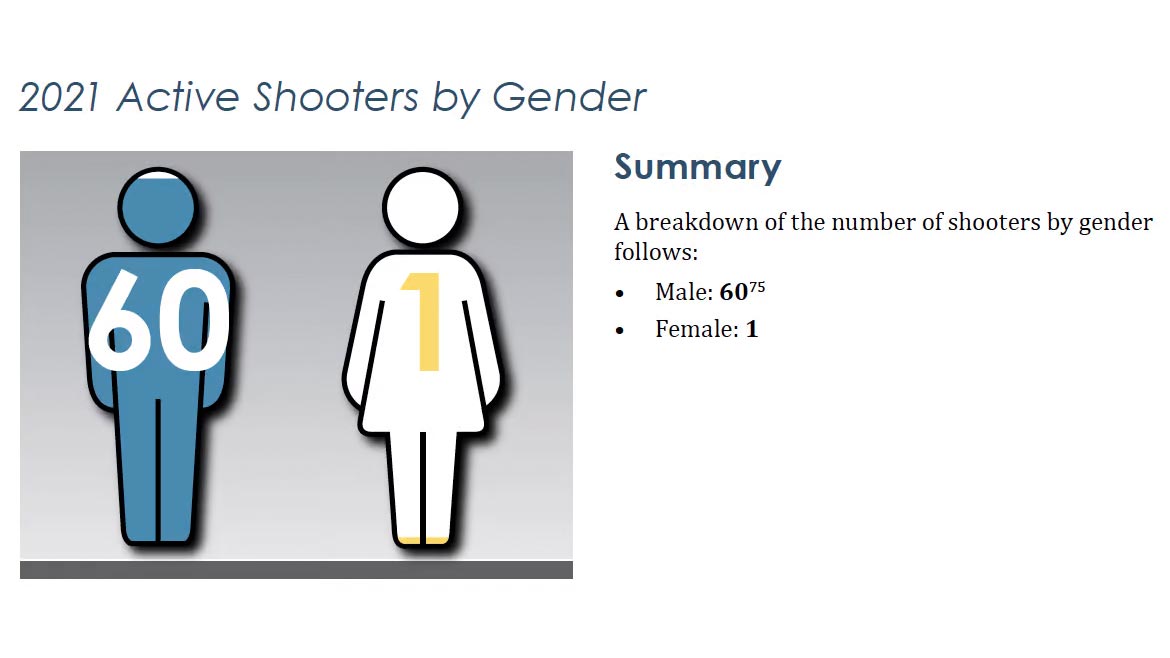 Image courtesy of the FBI
Image courtesy of the FBI
A breakdown of the number of shooters by age group follows:
- 18 and younger: 2
- 19–24: 14
- 25–34: 18
- 35-33: 10
- 45-54: 9
- 55-64: 6
- 65-74: 1
- Unknown: 1
For 2021, the FBI observed an emerging trend involving active shooters — shooters who shoot in multiple locations, either in one day or in various locations over several days.
John Cohen, the former Acting Undersecretary for Intelligence and Analysis at the Department of Homeland Security, told ABC News that the United States is seeing another trend with active shooters. “The U.S. is in the midst of a multiyear trend where we are experiencing an increase in mass shooters who are seeking to advance their ideological beliefs or based on a perceived personal grievance,” Cohen said. “A growing subset of our population believes that violence is an acceptable way to express one’s ideological beliefs or seek redress for a perceived personal grievance.”
The Gun Violence Archive (GVA), which tracks gun violence incidents collected from more than 7,500 law enforcement, media, government and commercial sources, tracked 692 mass shootings in 2021, the worst year on record for the number of mass shootings since GVA began tracking mass shootings in 2014. The not-for-profit uses a statistical threshold for definite mass shootings based only on the numeric value of 4 or more shot or killed, not including the shooter.
As of July 6, 2022, there have been 320 mass shootings since the year began, around the same number the country saw in the same January-June period last year. This number is on pace to match or surpass 2021.
It is imperative that security leaders understand the risks faced by active shooter situations and train on active shooter prevention, response and recovery efforts, as well as train their law enforcement partners.
Looking for a reprint of this article?
From high-res PDFs to custom plaques, order your copy today!




